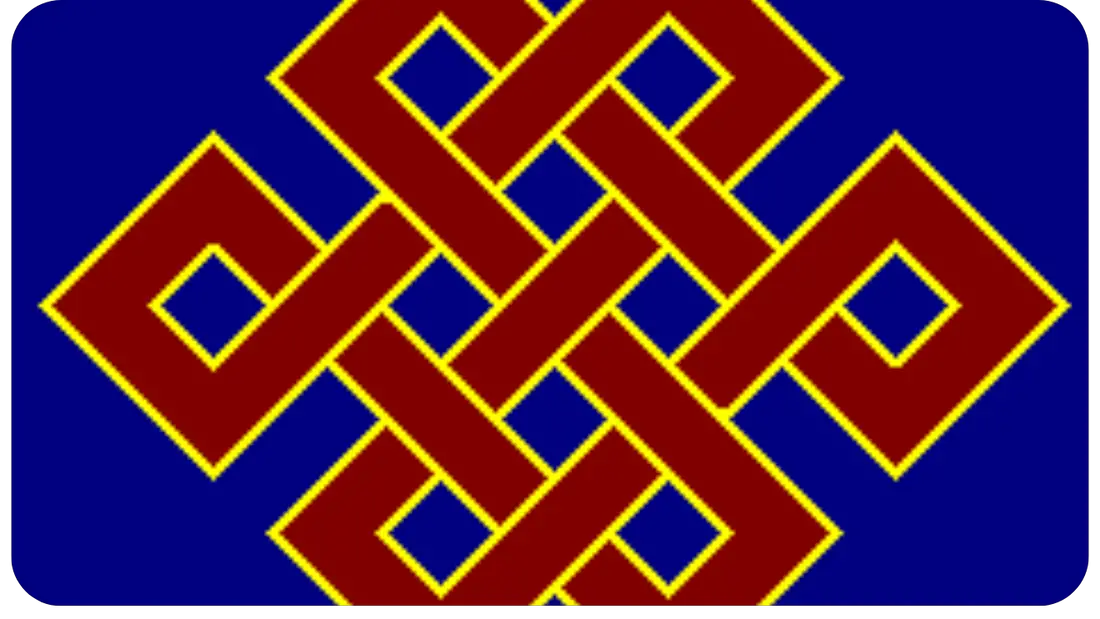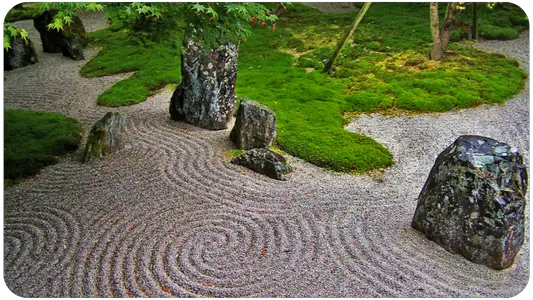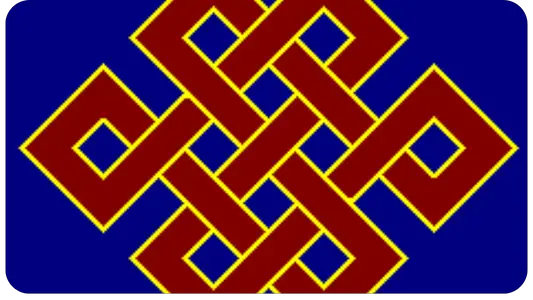An endless knot or infinite knot (Sanskrit: Shrivatsa; simplified Chinese: 盘长结; traditional Chinese: 盤長結; pinyin: pánzhǎng jié; Mongol: ᠠᠯᠤᠬᠠᠨ
ᠬᠡ, Cyrillic: Алхан хээ Tibetan: དཔལ་བེའུ, Wylie: dpal be'u;) is a symbolic knot of the Ashtamangala, the eight auspicious symbols of Tibetan Buddhism. It can be represented as a lattice or a flower.
In the Indian sphere, the term shrivatsa refers to other symbols related to the goddess Lakshmi.
Tibetan Buddhism
It is ubiquitous in Chinese craftsmanship, heavily influenced by Buddhism, especially in pendant knots, it is considered a lucky diagram and symbolizes longevity, continuity, love and harmony.
It has also influenced talismans in Korea, notably in Norigae or clothing designs. It can be found in contemporary culture in the logo of China Unicom
As one of the ashtamangala (eight auspicious symbols) of Buddhism, it is frequently found in Chinese religious art, including Tibetan Buddhism (Vajrayana Buddhism), mostly practiced in the regions of Tibet and Inner Mongolia and neighboring countries ; Mongolia, Tuva, Kalmykia, Bhutan, Nepal, Buryatia, etc, as well as in Mahāyāna Buddhism, practiced more in the rest of China, Korea, Japan and Vietnam.
In China, it is also sometimes seen as representing the entrails of the defeated enemy. The homophone characteristic of these two terms, 脏, zàng, "viscera or entrails" and 长 / 長, zhǎng is probably related to this.
Symbol of Tibetan Buddhism
In Tibetan Buddhism, it is originally a symbol of love and of the interdependence of phenomena. Without beginning or end, it also represents the infinite wisdom of the Buddha, the union of wisdom and compassion.
It has the nature of shining with a multitude of colors, representing the achievement of an omniscient, unobstructed state, symbolizing the realization of the perfections of the mind.





